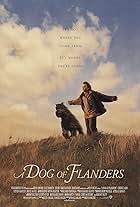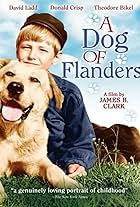Ricerca avanzata
- TITOLI
- NOMI
- COLLABORAZIONI
Filtri di ricerca
Inserisci la data completa
a
o inserisci solo aaaa o aaaa-mm di seguito
a
a
a
Escludi
Include solo titoli con gli argomenti selezionati
a
In minuti
a
1-50 di 364
- Story of a woman who merely wished to be a loving wife, but always had to live the life of crime.
- The daughter of a thief, young Moll is placed in the care of a nunnery after her mother's execution, but the actions of an abusive priest lead her to rebel as a teenager, and she escapes to the dangerous streets of London. Further misfortunes drive her to accept a job as a prostitute from the conniving Mrs. Allworthy, where she first meets Hibble.
- Heartwarming story about an orphaned boy whose hard life is offset by his love for an abandoned dog, his determination to become a great painter, and his friendship with an artist.
- A bawdy story of how a poor damsel surrenders her virtue again and again to get to the top of society.
- The emotional story of a boy, his grandfather, and his dog. The boy's dream of becoming a great classical painter appears shattered when his loving grandfather dies.
- Flanders, a famous female author, travels 1989 after the fall of the Berlin wall into the German capital. She is deeply depressed of the events because she saw the communistic states as a very good thing that has now ended. In the joy of these days she finds no person to understand her, so she has to travel back to Munich. After meeting several people, known and unknown, it seems as if there will be no way to go.
- Tentative adaptation of Ouida's sentimental classic about a poor Flemish boy (Frankie Thomas) whose ambition is to become a painter.
- All kinds of misfortune befall Moll Flanders in 18th-century England; but she's a great survivor.
- Nello saves the life of a dog but returns home to find his grandfather dead. Living under a haystack, he enters a drawing contest and wins the prize and the affections of a fellow artist, who adopts him.
- Ninety years after the last shots were fired, two young Australian historians embark on an emotional journey to the First World War battlefields on the infamous Western Front and find five bodies of Australian troops buried under a road in Flanders. With the aid of DNA and historical research they embark on a quest to give names to the anonymous dead.
- The life and career of John McCrae, a World War I army doctor who wrote the 20th century's greatest war memorial poem.
- Patrasche, a Dog of Flanders - Made in Japan evokes several different (imaginary) representations of Flanders based on the novel. The story originally reflects the love of Ouida for dogs and art, being the owner of 15 dogs who received lobster for lunch. Yet the story is above all a British critique on Flanders as a barbarian, heartless and utterly unchristian place. By contrast, the Japanese perceive of a heroic and tragic Flanders through the story of Nello: he is the western samurai who dies with nobility and Patrasche is the symbol of friendship and loyalty, values, which are vital to the Japanese. In Flanders, Nello's noble way of dieing is no part of their cultural heritage. The film blends different visual styles. Starting from a small house in Flanders the author-narrator embarks on a virtual trip trough all the images created by the novel. Scenes from unique 35mm and 16mm prints of all USA films based on the book, State of the art anime scenes of the Japanese series, Numerous illustrations found in first print books from the UK, USA and Japan, Laterna magica images,... Through the story of 'A dog of Flanders' and its many images, the film continuously flirts with imaginary, fictionalized and hilarious versions of Flanders. It is therefore clear that this film is not only destined for "Flemish" viewers. Patrasche, a Dog of Flanders - Made in Japan is a laboratory of the image. It is a prism, through which the viewer can experience how flu reality is and how a small book can stigmatize | create an entire culture. STATEMENT DIRECTORS Being born in Flanders, we are interested in stories starting from our own experience and taking us on a journey abroad - hereby creating intercultural links between us and others. The story about a dog of Flanders interests us particularly because its impact worldwide is so unknown in Belgium. What does this say about "us"? Why don't "we" see or understand this impact? And even more interesting: how do others see "us"? How do they imagine "us"? What cultural values are intertwined with their imagination of "us"? Through the story of the dog of Flanders we try to go deeper and evoke these cultural values of the British, the Americans and especially of the Japanese. Japan is a country that has been a source of inspiration for both of us for many years. Didier is an 'otaku', growing up in the seventies with Japanese manga. Through this film, he intertwines his personal fascination for one of the first large scale animated series, his desire to collect and analyse films and his own country. An is a visual anthropologist and weaves her interests in cultural differences, with the questioning of the documentary genre itself. We think of the audiovisual as a playful toolbox. Each specific story creates a specific use of camera, sound, editing. With Patrasche, a Dog of Flanders - Made in Japan we appreciate the challenge of combining different types of images - archival footage, animation and live interviews - in elaborating a personalized point of view. We treat these different images as a caleidoscope, a laboratory of images of the author-narrator who explores, analyses, compares and recreate. Contrasts between imaginary communities and what people experience are fascinating to us. In Patrasche, a Dog of Flanders - Made in Japan this contrast is the result of the imagination by the Japanese and the Americans based on the novel of "Dog of Flanders" versus the ignorance of the Flemish of (the popularity of) this book. We think these stories are crucial in our contemporary society in which previously obvious borders are fading. Influenced by globalization, the network society, and new technologies, people and their communities undergo drastic transformations in a relatively short period of time, and representations are always part of this process.
- During World War I, in Flanders, Berry and Morley were in love with the same girl, Yvonne. During a battle in the Widow's Island sector, Morley is wounded and abandoned by Berry. Morley being reported missing, Berry now has a clear path to marry Yvonne. Two decades later, Yvonne incidentally meets a tourist guide in the former combat zone region who looks fiendishly like - Morley.
- Two men enter a trench; one man leaves. A brief glimpse into the psychological effects of trench warfare during World War I.
- Nello was a little boy who lived with his aged grandfather near Antwerp. They were very poor, but because they loved each other so much were happier than many persons who enjoyed luxury. The child's only friend, outside of her grandfather, was an animal, who has gone down in history as "A Dog of Flanders." The dog was owned by a cruel tinker who forced him to draw heavy loads and repaid his labor with curses and blows. Finally, the animal broke down under his inhuman usage, and his heartless owner left him by the roadside to die. There he was found by little Nello, who tenderly nursed him back to health. The grandfather could do nothing for his living but limp about a little with a small cart with which he carried daily the milk cans of those happier neighbors who owned cattle, away into the town of Antwerp. One morning the dog, unhidden, stepped into the shafts of the cart and signified in dumb fashion that to propel it was his work. The old man was daily growing weaker, and found occasion to bless the time that he had taken the ill-treated dog into his humble home. Finally the old man grew so weak that he had to remain in the cottage while Nello and the dog cheerfully became the bread winners of the family. The boy's secret ambition was to be a great artist and whenever he had an opportunity he would slip into the cathedral at Antwerp to stand, spellbound, before the masterpiece of the great Rubens. With no one to aid him, and with only rough brown paper and charcoal as his implements he toiled away hopefully. Near Nello's home lived a rich miller, whose little daughter, Alois, frequently played with Nello. The miller was purse proud, and finally forbade the poor boy to come to his house, telling him that when his daughter grew up he intended she should make a rich marriage. Nello felt his dismissal keenly. The boy was ambitious and sketched industriously. About this time there was a competition in Antwerp, open to all untrained artists under the age of 18. The cash prize was large, but in addition the winner's artistic future was assured. Nello submitted a drawing with high hopes, but the prize was awarded to the son of an influential citizen, although later it was admitted that little Nello's sketch was by far the better, and best. Returning home brokenhearted, he found that his aged grandfather had died, and creditors seized the things in the cottage, and the boy and the dog were turned out to shift for themselves. While making their way through a bad snowstorm one day, Nello suddenly unearths a wallet, containing lots of money. Although Nello was hungry and penniless, he would not touch a cent of the money in the wallet, but immediately turned around and started for the house, the miller's house, the miller who had lost it was out searching frantically for it. Nello gave the wallet to the wife, and asked her to take care of his dog, in his old age. And saying good-bye to the dog, he went out into the storm once more. The miller returned a little later, the dog fled from the house as he entered. The miller was very sorry that he had been so mean to the poor little boy and his dog, and wished that he could make amends, but Nello and his faithful friend lie in the one grave side by side, and the people of Antwerp always tell the story of "A Dog of Flanders."
- An Earl's reformed son fakes a relapse on learning his sweetheart loves another, and dies saving his life.
- A modern reimagining of "The Pardoner's Tale" from Chaucer's "Canterbury Tales".
- The last few moments of five soldiers from the Royal Scots Fusiliers, as they prepare to go "over-the-top" during World War 1.

















